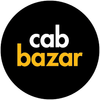Web 3.0 blockchain technology is redefining the internet by enabling a decentralized, secure, and user-empowered digital ecosystem. This next generation of the web combines blockchain, artificial intelligence (AI), the semantic web, and IoT to create networks where users control their data, assets, and interactions without reliance on centralized authorities. In 2025, Web 3.0 continues to gain momentum globally, driven by increased adoption, technological breakthroughs, and expanding commercial use cases.
According to Straits Research, the global Web 3.0 blockchain sector was valued at USD 4.84 billion in 2024 and is estimated to grow from USD 7 billion in 2025 to an impressive USD 135.34 billion by 2033, at a compound annual growth rate (CAGR) of 44.8% during the forecast period (2025–2033).
Major Trends and Innovations Powering Web 3.0 Blockchain
-
Decentralization and Trustlessness: Web 3.0 dismantles centralized control by distributing network governance and data ownership among users. Trustless protocols using blockchain consensus ensure secure, verifiable transactions without intermediaries, empowering users with data sovereignty and control over digital identities.
-
Next-Gen Smart Contracts and Interoperability: Enhanced smart contracts execute complex programmable agreements automatically, integrating finance, logistics, healthcare, and gaming sectors. Interoperability solutions are breaking silos, allowing multiple blockchains, dApps, and enterprises to communicate seamlessly in the Web 3.0 ecosystem.
-
Integration with AI and IoT: AI leverages decentralized blockchain data for unbiased, transparent decision-making. Blockchain enhances IoT device security and data integrity, enabling decentralized marketplaces for data exchange and automated workflows based on trustworthy information shared across the network.
-
Semantic Web and Enhanced User Experience: The semantic web layer allows machines to understand and link data contextually, facilitating more personalized services, intelligent agents, and automated content discovery integral to Web 3.0’s vision.
-
Rise of Decentralized Finance (DeFi) and NFTs: DeFi platforms are maturing, offering cryptocurrency lending, borrowing, and asset tokenization. Non-fungible tokens (NFTs) are expanding beyond digital art into real estate, gaming, and intellectual property, driving user engagement and new commercial models.
Country-Wise Growth and Key Players
-
United States: The US leads innovation with blockchain pioneers like Coinbase, Ethereum Foundation, and Consensys driving decentralized finance, NFT marketplaces, and developer tools. The US ecosystem benefits from robust venture capital funding despite regulatory uncertainties. Recent expansions include enhanced AI-blockchain hybrid applications and enterprise blockchain solutions for healthcare and finance.
-
China: Despite regulatory restrictions on cryptocurrency, China advances vigorously in blockchain infrastructure, focusing on government-supported initiatives such as the Digital Yuan and supply chain tracking. Firms like Ant Group and Huawei push blockchain interoperability, digital identity, and smart contract platforms aligned with national digitization goals.
-
Europe: European countries, including Germany, France, and Switzerland, emphasize regulatory compliance and blockchain standards through initiatives like the EU’s Digital Finance Package. Companies such as IOV Labs (RIF) and Tezos focus on sustainable blockchain designs and decentralized identity solutions. Cross-border blockchain projects for trade and healthcare data exchange are seeing rapid development.
-
India: India’s blockchain landscape is growing dynamically with startups like Polygon, WazirX, and government programs promoting blockchain for public services, agriculture, and finance. The launch of Web3.0 ecosystem directories and innovation hubs accelerates local adoption and global partnerships, positioning India as a major Web 3.0 hub.
-
South Korea and Japan: Both countries invest in blockchain infrastructure and enterprise adoption. South Korea's Kakao and Japan’s Soramitsu are developing blockchain-based payment and digital asset solutions, supported by government innovation grants targeting Web 3.0 business integration.
Impact of Global Tariffs on Web 3.0 Blockchain Industry
The Web 3.0 blockchain sector has faced indirect pressures from global tariffs, predominantly affecting semiconductor chips, server hardware, and critical electronic components required for node infrastructure and data centers backing decentralized networks. Tariffs imposed especially from 2024 between the US and China have increased costs for mining equipment, blockchain hosting facilities, and IoT device production. This has prompted blockchain companies to diversify hardware suppliers, invest in local manufacturing incentives, and optimize energy-efficient blockchain protocols to reduce operating expenses. While these tariffs introduced near-term cost challenges, they have stimulated innovation in hardware-software integration and encouraged regional blockchain infrastructure growth to build tariff-resilient ecosystems.
Recent Updates and Industry Highlights
-
In early 2025, Ethereum's highly anticipated upgrade further enhanced scaling through sharding and introduced energy-efficient proof-of-stake consensus, boosting transaction throughput and sustainability.
-
Polygon successfully launched multi-chain interoperability tools facilitating seamless dApp and asset exchange across blockchains, fostering a unified Web 3.0 developer environment.
-
Coinbase expanded its NFT marketplace with AI-assisted discovery and social features, driving mainstream NFT adoption and engagement.
-
Government-backed blockchain consortia in the European Union have initiated interoperable digital identity frameworks for cross-border public service access and verified data sharing.
-
Asia-Pacific saw explosive growth in DeFi protocols leveraging 5G expansion, enabling faster and wider blockchain access among mobile users.
Future Outlook and Trajectory
Web 3.0 blockchain is on a steep growth curve powered by technological maturation, increasing user awareness, and expanding enterprise adoption. The next frontier involves convergence with AI, IoT, and 6G networks to deliver seamless decentralized applications that are intelligent, scalable, and privacy-preserving. Regulatory clarity worldwide will enable greater institutional participation, while conservation-conscious blockchain designs address environmental concerns. Emerging markets will further expand global user bases, leveraging blockchain for financial inclusion, supply chain transparency, and digital governance models. By 2033, Web 3.0 is expected to transform digital experiences into decentralized, user-controlled, and interoperable ecosystems powering the “internet of value.”
Summary
Web 3.0 blockchain technology is rapidly revolutionizing the internet with decentralization, AI, and IoT integration driving unprecedented growth and innovation. Despite challenges such as global tariffs impacting hardware costs, key players worldwide are advancing scalable, sustainable blockchain applications. The future of Web 3.0 promises a more secure, transparent, and user-empowered digital world.



Top comments (0)